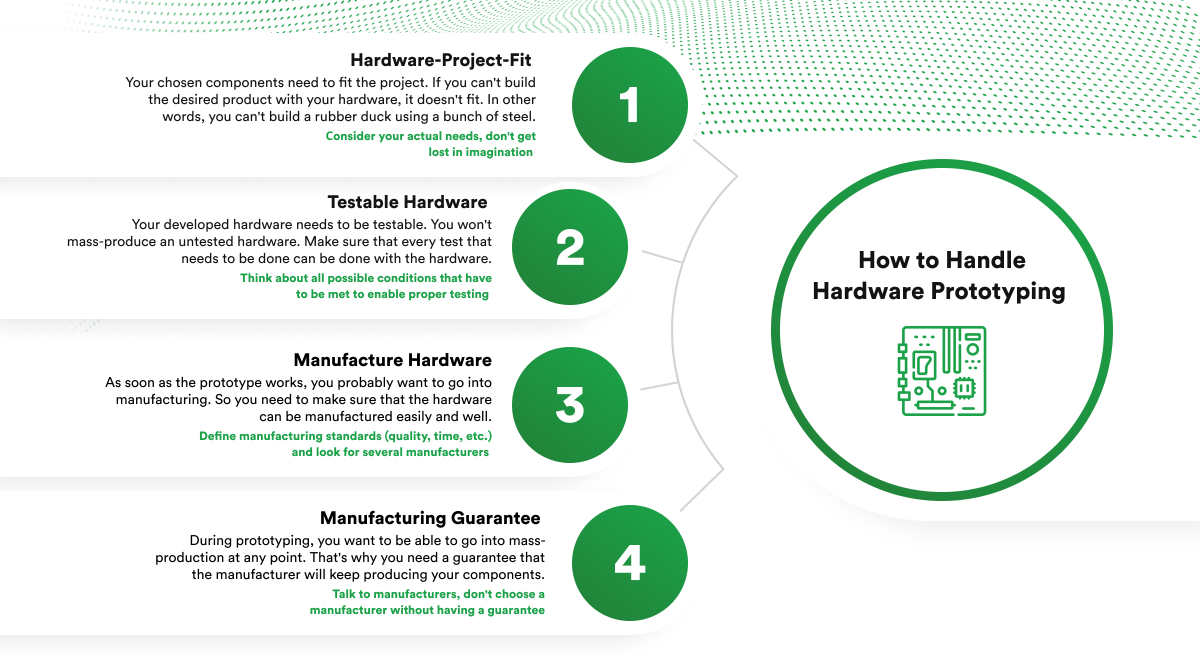The development process is a critical phase where the conceptualized design is transformed into a functional system. This stage is characterized by iterative development, testing, and refinement cycles. Using agile methodologies and model-based designs can significantly enhance the effectiveness of this process.
Agile Methodologies for Embedded Systems. Agile methodologies have been widely adopted across various software development projects due to their flexibility and focus on customer feedback and continuous improvement. In embedded systems, these methodologies facilitate adaptation to change and rapid problem-solving.
Iterative Development. Agile promotes an iterative development process, allowing frequent reassessment of a project’s direction. This is particularly valuable in embedded systems, where requirements can evolve based on real-world testing and integration challenges. According to McKinsey & Company research, 93% of Agile organizations reported better customer satisfaction than non-Agile teams.
Continuous Integration. Implementing continuous integration helps detect errors early and improve the software’s quality. For embedded systems, where software and hardware integration present unique challenges, continuous integration can prevent significant integration issues later in the development cycle.
Early and Frequent Testing. Agile methodologies emphasize early and frequent testing, which is crucial for embedded systems. This approach helps identify and fix bugs early in the development process, thus reducing the cost and time associated with late-stage corrections.
Model-Based Design (MBD)
Model-based design is a mathematical and visual approach to solving complex control, signal processing, and communication systems problems. It is widely used to automate the development of embedded systems.
MBD allows developers to create a virtual model of the embedded system, which can be used for simulation and verification before physical prototypes are built. This significantly reduces the development time and cost.
MBD facilitates handling large data sets and complex algorithms without losing track of the system’s behavior. This is crucial for maintaining consistency across the development team and ensuring that the final product behaves as expected. It also simplifies the integration of new features and system updates.
Using standardized models helps maintain consistency throughout development, from design to testing and validation. This uniformity is crucial when multiple teams work on different aspects of the project, ensuring that the final system is coherent, and functions as designed.
By adopting agile methodologies and model-based design, embedded system developers can enhance their development processes, ensuring more robust, efficient, and scalable systems. These practices speed up the development process and improve the final products’ reliability and functionality, catering effectively to dynamic market needs and technological advancements.
Keeping Embedded Systems Secure
As embedded systems become increasingly interconnected and integral to critical infrastructure, security considerations must be at the forefront of the development process. The rise of IoT has exponentially increased the number of connected devices, amplifying the potential impact of security breaches.
Growing Importance of Security. The security of embedded systems is paramount, mainly as these devices often operate within critical and sensitive environments. According to a report by MarketsandMarkets, the IoT security market size is expected to reach $59.2 billion by 2028. This growth underlines the increasing emphasis on securing embedded systems in response to an expanding attack surface due to IoT expansion.
Security Best Practices in Development. Integrating security best practices into the development lifecycle is essential to protect against vulnerabilities and ensure the integrity and confidentiality of data. This includes adopting a security-by-design approach, where security is considered at each stage of the development process rather than as an afterthought. For instance, using secure coding practices can mitigate risks associated with common vulnerabilities, such as buffer overflows and injection attacks.
Secure Coding Practices. Implementing secure coding standards is crucial in minimizing security vulnerabilities. Using tools like static code analyzers and following guidelines from organizations such as OWASP (Open Web Application Security Project) and MISRA (Motor Industry Software Reliability Association) can help developers identify and rectify security flaws early in the development process.
Proactive Threat Modeling. Engaging in threat modeling activities during the design phase helps identify potential security threats and assess their associated risks. This proactive approach allows developers to design countermeasures and architect resilient systems against attacks.
Testing and Validation
Testing and validation are critical components of the embedded software development lifecycle. They ensure the system performs as expected under various conditions and meets all specified requirements. This phase is crucial for identifying and resolving defects before the system reaches production, significantly reducing potential operational risks and costs associated with post-deployment failures.
Strategies for Thorough Testing Throughout the Development Lifecycle
Implementing comprehensive testing strategies throughout the development lifecycle is essential. A Consortium for Information & Software Quality (CISQ) report estimates that software quality issues in the U.S. cost an astounding $2.41 trillion annually, highlighting the economic impact of insufficient software testing. Effective testing strategies include unit testing, integration testing, system testing, and acceptance testing, each serving a specific purpose and catching different types of errors at various stages of the development process.
Utilizing Hardware-in-the-Loop (HIL) Simulation
HIL simulation is a powerful technique for validating the complex behaviors of embedded systems. It allows developers to test the integration of the software with hardware in a controlled, simulated environment before deploying it in real-world scenarios. HIL automation testing is particularly effective for identifying hardware-specific issues or potential conflicts between the software and hardware that might need to be evident in software-only simulations.
Importance of Code Coverage and Functional Testing
Achieving high code coverage during testing is critical as it ensures that a significant percentage of the executable code has been tested, which can reduce the risk of undetected bugs. On the other hand, functional testing focuses on testing the software to ensure it meets all specified requirements.
Incorporating Advanced Testing Tools
A relevant example of an advanced testing tool is the The MATT robot. It is an advanced tool designed for automated testing of physical and touch-based interfaces, including embedded systems. By automating repetitive tasks and mimicking human interaction with devices, MATT can significantly improve the efficiency and accuracy of testing processes. For example, MATT can simulate various user interactions under controlled test conditions to ensure that the software behaves as expected in real-world usage scenarios.








